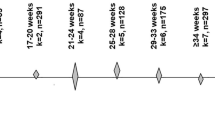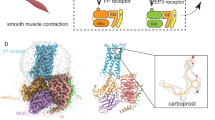Abstract
A MONTHLY application of contraception has the advantage that it involves application of medication only in the event of suspected pregnancy such as delayed menses1, thereby reducing the unnecessary exposure of healthy persons to drugs. An intravaginal application of prostaglandins (PGs) has been successfully used for this purpose in 11 women1. Naturally occurring PGs need to be administered in high doses to obtain termination of pregnancy by the oral route, however, and the effective doses have side effects such as vomiting, nausea and diarrhoea1. It would be desirable to develop an analogue of natural PG active orally in doses which have no undesirable side effects, and with this rationale in mind we developed a C-22 derivative (Fig. 1) of PGF2α—ICI 74,205 which appears to be some 20 times more potent orally than the parent PG in terminating early pregnancy in hamsters.
This is a preview of subscription content, access via your institution
Access options
Subscribe to this journal
Receive 51 print issues and online access
$199.00 per year
only $3.90 per issue
Buy this article
- Purchase on SpringerLink
- Instant access to full article PDF
Prices may be subject to local taxes which are calculated during checkout
Similar content being viewed by others
References
Karim, S. M. M., Contraception, 3, 173 (1971).
Labhsetwar, A. P., J. Endocrinol, 53, 201 (1972).
Author information
Authors and Affiliations
Rights and permissions
About this article
Cite this article
LABHSETWAR, A. New Antifertility Agent—an Orally Active Prostaglandin—ICI 74,205. Nature 238, 400–401 (1972). https://doi.org/10.1038/238400b0
Received:
Issue date:
DOI: https://doi.org/10.1038/238400b0
This article is cited by
-
Synthesis of azacyclic prostaglandin analogs (review)
Pharmaceutical Chemistry Journal (1993)



